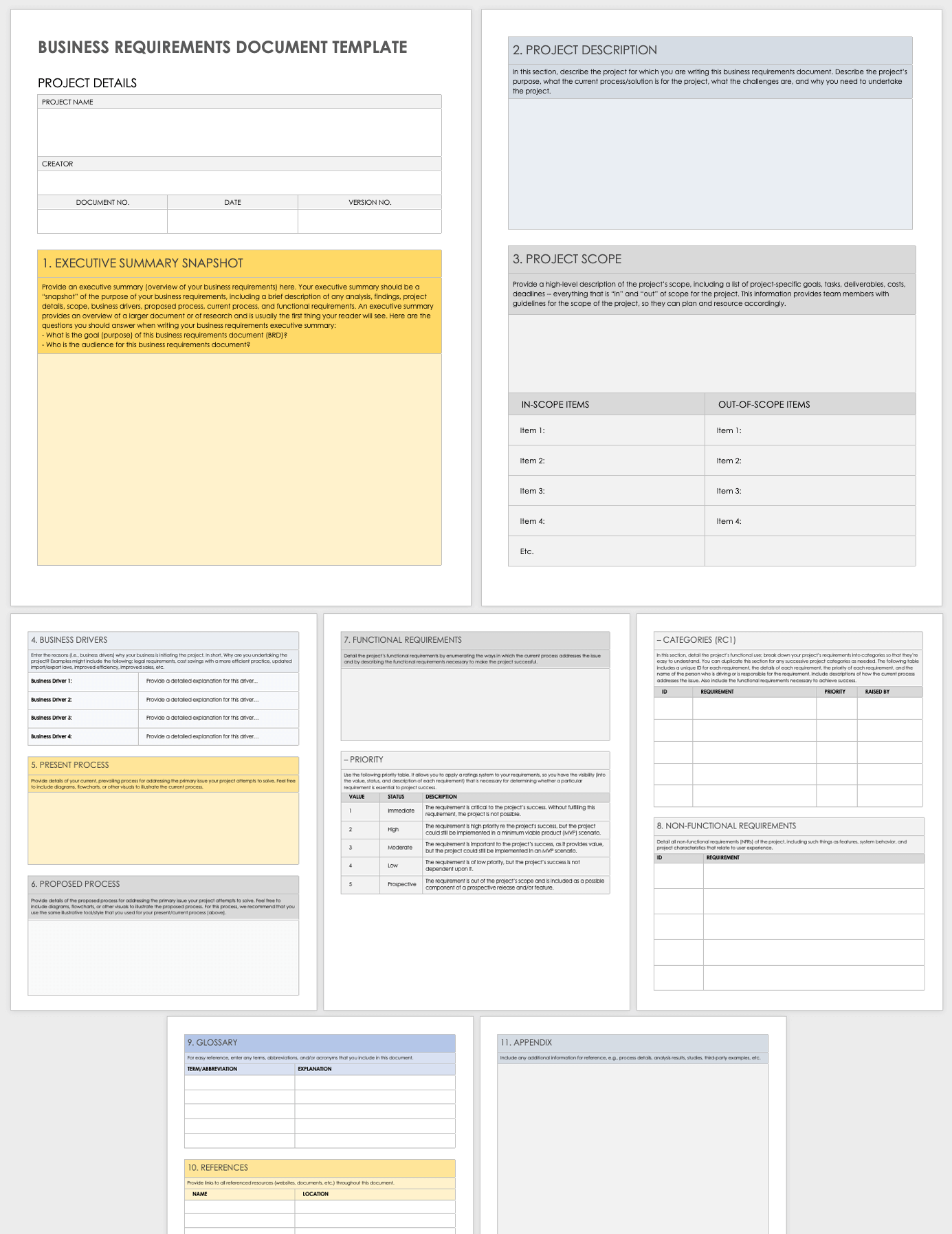Automating business processes can help organizations streamline operations, reduce costs, and improve efficiency. A business process requirements template can serve as a valuable tool for capturing the essential details of these processes and ensuring their effective automation. A well-defined template provides a structured framework for gathering, documenting, and analyzing process requirements, making it easier to design and implement automated solutions that meet the organization’s specific needs.
Using a business process requirements template offers several benefits. It ensures that all relevant stakeholders are involved in the process analysis and documentation, promoting a shared understanding of requirements. The template also helps identify and address potential bottlenecks and inefficiencies, allowing for proactive improvement rather than reactive problem-solving. By providing a consistent format, it facilitates collaboration and promotes a common language among team members, reducing the risk of miscommunication and errors.

Defining Process Boundaries and Objectives
A crucial aspect of using a business process requirements template is clearly defining the process boundaries and objectives. This involves identifying the starting and ending points of the process, its scope, and the intended outcomes. Defining the process boundaries helps avoid ambiguity and ensures that the automation effort focuses on the most relevant areas. The objectives should be specific, measurable, achievable, relevant, and time-bound (SMART) to provide a clear target for the automation project.
Additionally, consider the process context. Understanding the process’s relationship with other processes and systems within the organization is essential for capturing a comprehensive set of requirements. Identify any dependencies, external factors, and constraints that may impact the process’s execution. Defining these parameters helps ensure that the automated solution integrates seamlessly with the existing business ecosystem.
To effectively define process boundaries and objectives, engage with key stakeholders, including process owners, subject matter experts, and end-users. Their insights and perspectives ensure that the template captures a comprehensive and accurate representation of the process’s requirements.
Documenting Process Activities and Flows
Once the process boundaries and objectives are defined, the next step is to document the process activities and flows. This involves breaking down the process into individual steps or tasks, identifying their sequence, and specifying the inputs and outputs associated with each activity.
To ensure accuracy and completeness, involve process participants in this step. Their hands-on knowledge and understanding of the process dynamics provide valuable insights into the specific tasks, decision points, and dependencies that need to be captured. By documenting the process flows, the template creates a clear visual representation of the process, facilitating stakeholder understanding and ensuring that all aspects of the process are considered for automation.
Consider using process mapping techniques such as flowcharts or swimlane diagrams to visualize the process flows. These visual representations enhance clarity and help identify potential bottlenecks, loops, and redundancies that may need optimization during automation.
Conclusion
A business process requirements template serves as a valuable tool for organizations looking to automate their business processes effectively. By providing a structured approach to capturing and documenting process requirements, organizations can ensure that the automated solutions meet their specific needs and deliver the desired outcomes. The template promotes collaboration, facilitates stakeholder involvement, and minimizes ambiguity, ultimately leading to successful process automation initiatives.
Remember, the effectiveness of a business process requirements template lies in its ability to accurately represent the process and its requirements. By investing time and effort in defining process boundaries, documenting activities and flows, and engaging stakeholders throughout the process, organizations can harness the full potential of automation to streamline operations, reduce costs, and improve efficiency.
